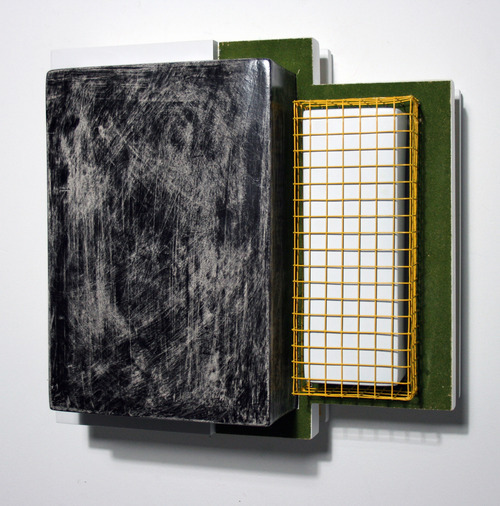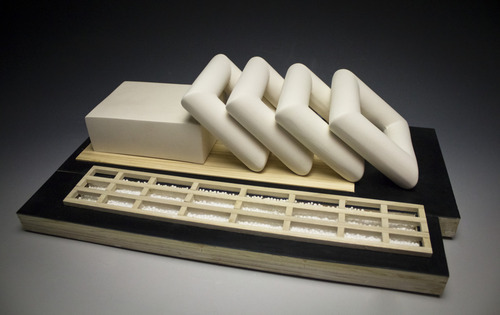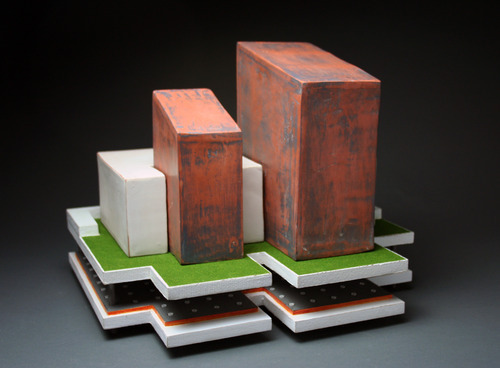Your work evokes artificial landscapes and strange architectural agglomerations. What is your source of inspiration?
Most of my work inspired by man-made objects; something like a view of building blocks from the sky, transformer boxes out in the field, and strange formations on the roof. Recently I started to add more abstracted objects, like the connection parts of an exhaust fan, pipe or even inside a lock. I am inspired by something that is recognizable but has an uncertain function.
What technique do you use in order to achieve the monolithic, geometrical volumes that compose your work? Take us through the process of creating your work.
For most of my work I combine hand building, slip casting, and wheel thrown techniques. In terms of surface, I achieve an ultra-smooth finish by using a range of sandpaper from 200-600 grit. I then use a marble polisher to sand the surface till it is as smooth as butter. For my industrial landscape series, “The View From Above,” I leave the clay surface as it is this emphasizes the unique qualities found within a raw clay body. For my “Industrial landscape series”; I apply glazes, sometimes paint or enamel to achieve the old sanded look.
The Industrial Landscape series are exploring the mysterious relationship between how one object fits unexpectedly into another and becomes a whole new composition. Tell us more about this relationship.
The mysterious relationship between space and curiosity has always influenced my work. I think those space redefine objects and give those objects meaning. For example, when you have a simple form like a cup, the space created by the handle defines the shape of the cup, when you added a saucer to this cup, the composition has changed. It redefines the function of this cup not only by adding more meaning to it, but also increasing the tension. I believe that one object needs another object and the space in between are the main reason why I am interested in this relationship, it is also what peaks my curiosity and motivates my work.

Kwok-Pong Bobby Tso, Zeta, Industrial landscape Series, 2011, Porcelain, paint, wood, hobby paper and metal, H 13 ¼" x W 14" x D 6"
Your work speaks about the relation between objects. Today’s urban landscape is human-made, and yet hard to manage sometimes. In this context, what connection between us and the urban environment we should value the most?
I think we are very used to seeing urban environments, so much so that we have stopped paying attention to them all together. With my work I would love for my viewer to think about what is around them no matter if it’s a landscape, environment, or just a simple object. I think that everything in life has its own meaning. Yes, it is true that some objects are more important than others, but I think that a lot of us overlook the simple things. With my work I want to embrace the simplicity of life and its connection between objects and spaces. I think we should ask why objects are put in certain positions and be curious about the relationship between them.
What are you currently working on? Where do you plan your next exhibitions?
I am currently working on a new body of work that speaks more about organized chaos; it is still about space/curious about space, but in a more playful way and less planned in terms of composition. I also have been informed that I will be having a show in Houston, Texas, USA during the National Council on Education for the Ceramic Arts in 2013.

Kwok-Pong Bobby Tso, The View From Above Series No.1, Industrial landscape, 2011, White earthenware, cone 04 oxidation, sanded surface, plastic, metal, and wood.
Interview by Ileana Surducan, published in Ceramics Now Magazine, Issue 2.
Visit Kwok-Pong Bobby Tso’s website.
View the list of interviews with ceramic artists.





















